Infant haemangioma (overview) Images
Go to article Infant haemangioma (overview)


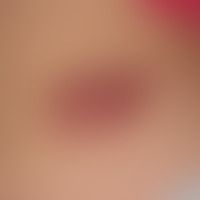


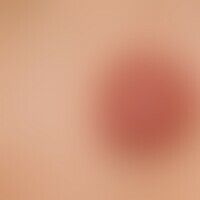


Haemangioma of the infant (series: 3-month-old infant); initial findings of a large hemangioma with little elevation.

Infant hemangioma (series: 1.75 years old, no therapy)

Infant hemangioma (series: 2 years old, no therapy)

Infant hemangioma (series: 2.5 years old; spontaneous evolution of the hemangioma)

Infant hemangioma (series: 6 years old, complete healing, no therapy)
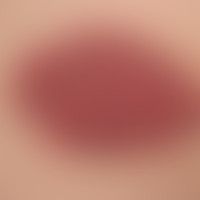
Haemangioma of the infant (series: initial findings):
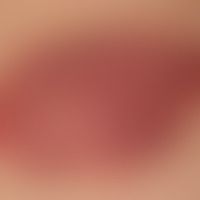
Infant hemangioma (series: findings after 1 year): No therapy

Infant hemangioma (series: findings after 2 years): No therapy, extensive regression of the node.
Remark: In the meantime the hemangioma is completely healed (except for some telangiectasias).




Haemangioma of the infant, hairless, solitary, congenital, soft, red nodule with mixed capillary-cavernous vascular proliferation and phased proliferation, growth arrest and regression.

Haemangioma of the infant: 3 months old infant, within 1 week extensive necrosis of the central parts, followed by rapid regression (see following documentation)

Haemangioma of the infant: After 3 months (without therapy) extensive regression with central discrete scar formation.









Infant hemangioma. 2.0 x 1.0 cm in size, solitary, chronically dynamic, rapidly growing since 2 months, soft, indolent, blue, smooth lump on the left eye of a 3-month-old infant. Furthermore, there is pronounced ptosis of the left eyelid and restrictions of the eye mobility of the left eye.

Infant subcutaneous hemangioma.
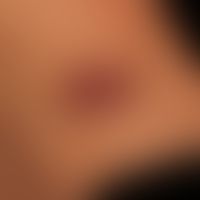
infant hemangioma
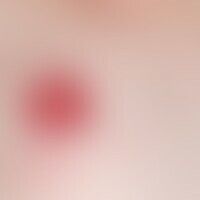




Hämangiomatose des Säuglings: (s.a.folgende Abbildungen); rote unregelmäßige Plaque mit zentralen Abblassungen.

Hämangiomatose des Säuglings: rote unregelmäßige Plaque und Knötchen, fokale Abblassungen.




infant hemangioma


